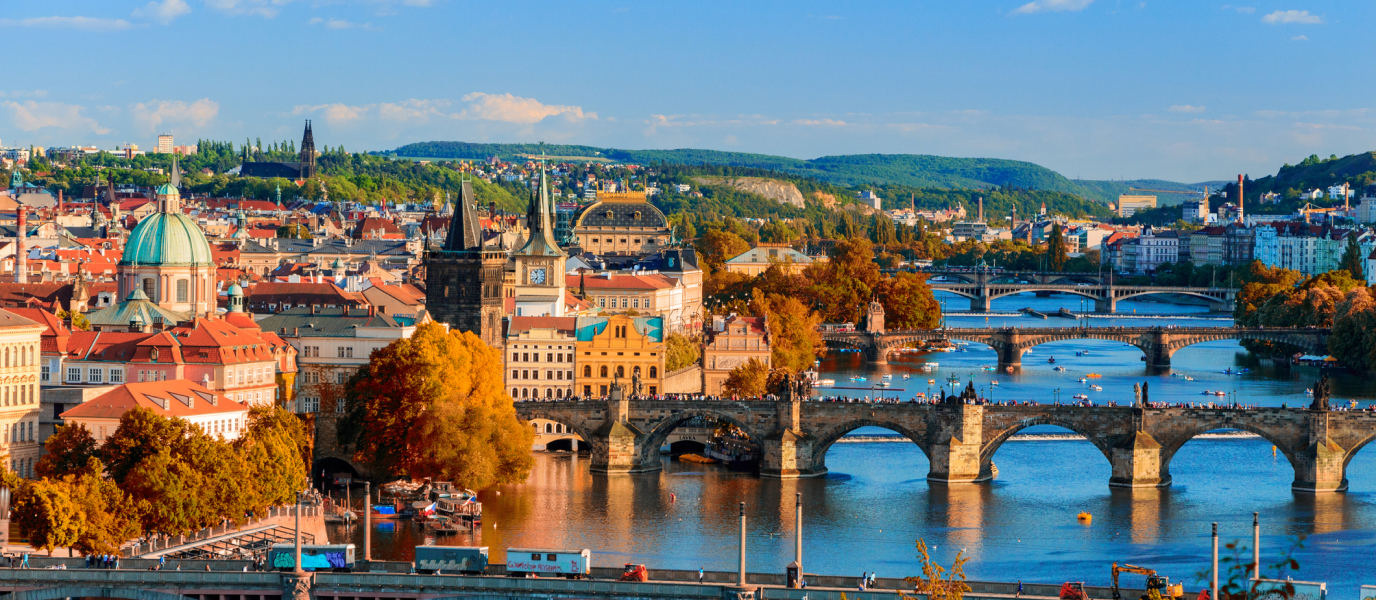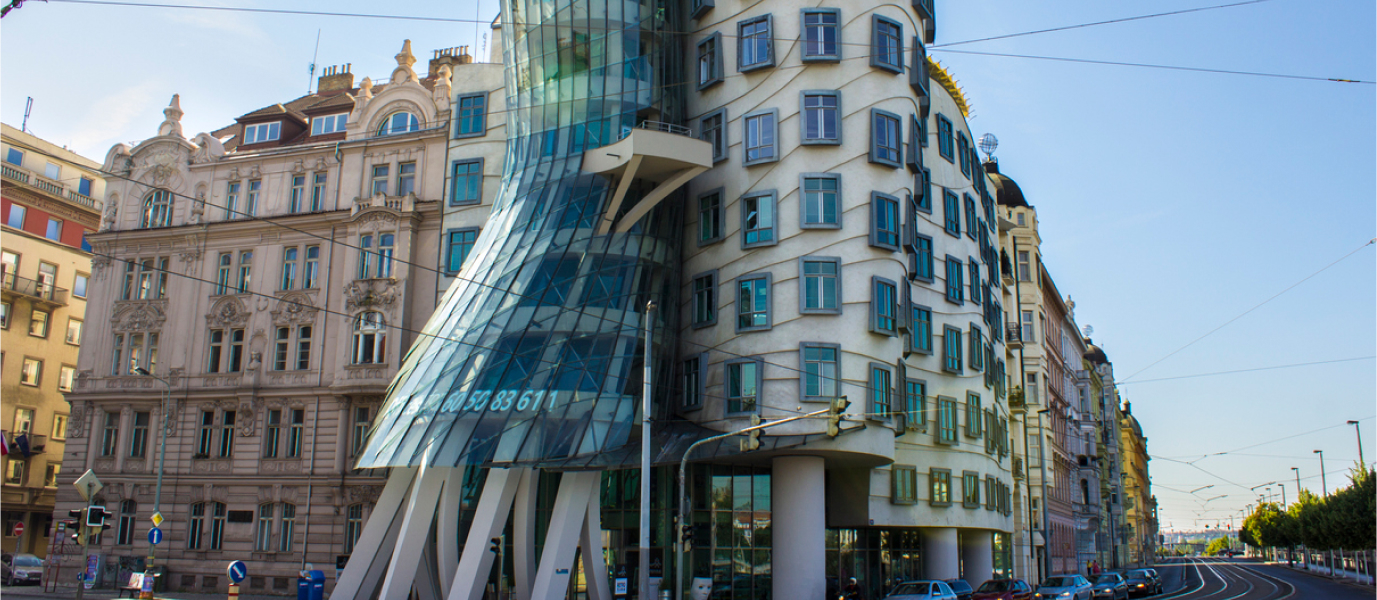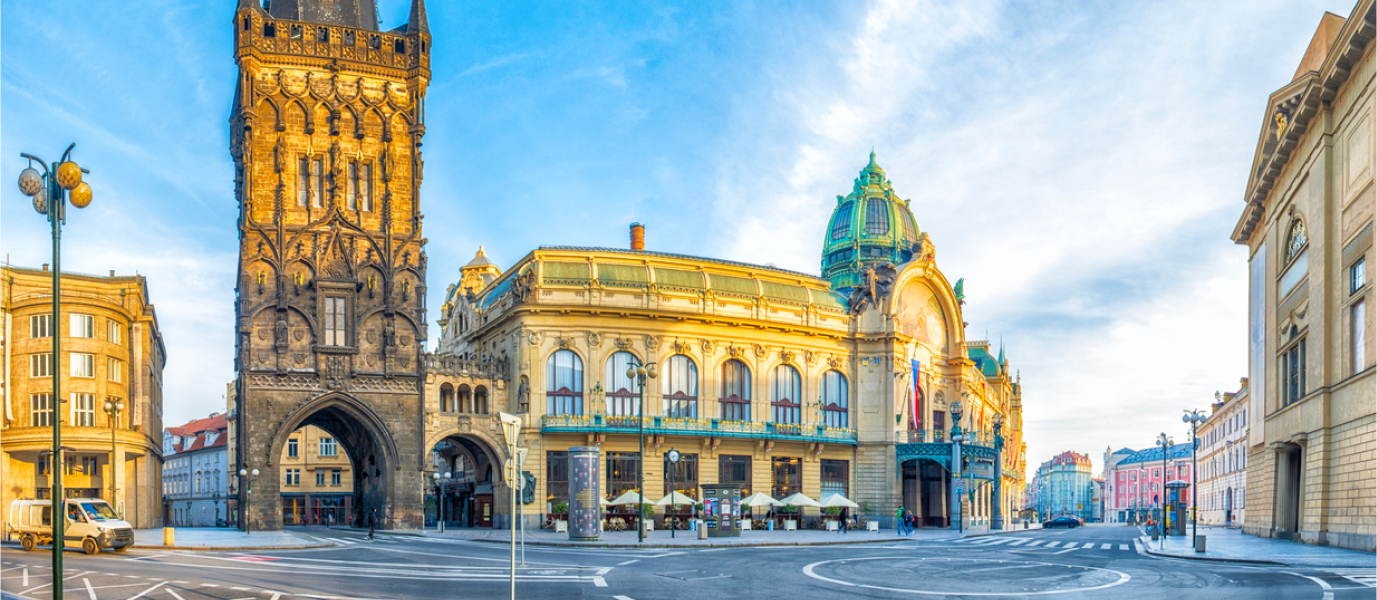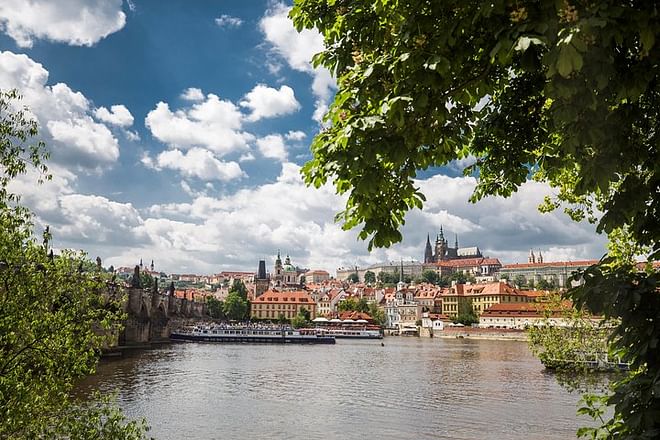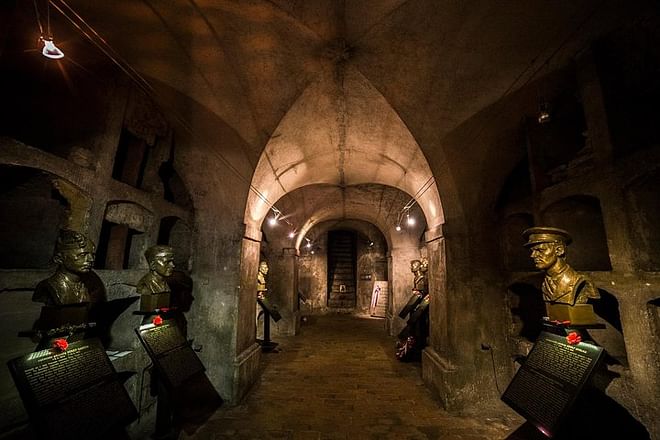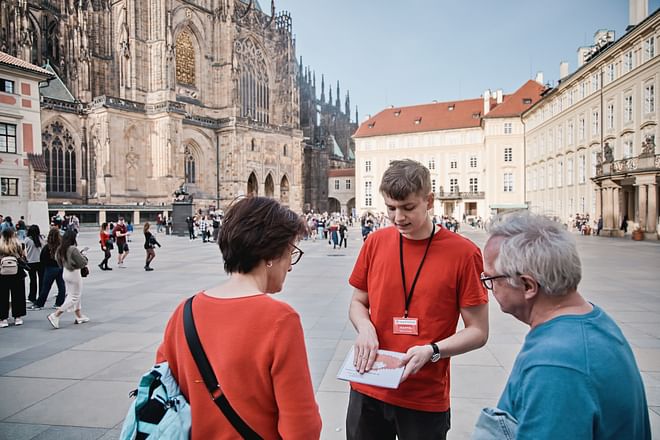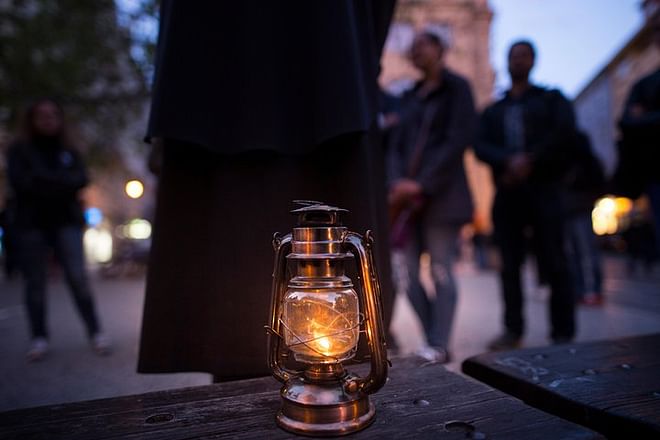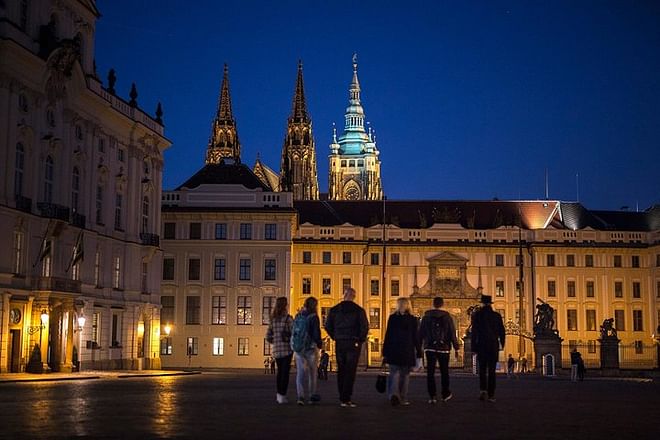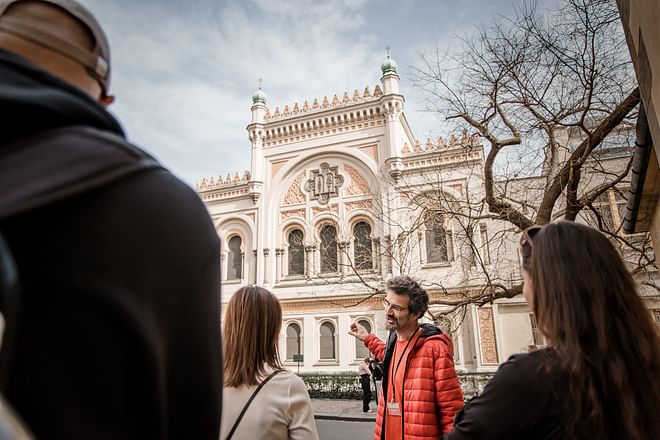No one would dispute that Prague Castle, one of the largest castles in the world, is one of the Czech capital’s unmissable sights. Although the visitor should bear in mind that it is not so much a castle as a complex made up of various palaces, courtyards, religious edifices, and streets. It is almost a tiny city standing on the hill and dominating the scene.
Its appearance is nothing like the usual medieval walled fortress. Within its walls, we can gaze admiringly at the magnificent St Vitus Cathedral, the charming Golden Lane and the intriguing Black Tower. Another edifice you can see here is the beautiful St George’s Basilica, a jewel of Romanesque origin with a typical Baroque exterior.
The basilica and St George’s convent through history
This church, located in St George’s Square, is a place steeped in history. It was founded in the year 920 by Vratislaus I, Duke of Bohemia, the father of St Wenceslaus, the patron saint of the Czech Republic. The basilica was dedicated to St George, and very soon became a place of profound religious significance, since in the year 925, the mortal remains of St Ludmila of Bohemia, the grandmother of St Wenceslaus and the person largely responsible for his upbringing, were interred there. She was murdered, and became the first Czech martyr.
In 973, the building’s first extension was added, with the founding of St George’s Abbey with a Benedictine Order. It had an early Romanesque style, with a basilica made up of three naves.
In 1142, a dreadful fire broke out, and the church was subsequently rebuilt, giving it the appearance we see today. The lateral naves were enlarged and two white pointed towers were built, which stand guard over the basilica to this day. A century later, the Gothic Chapel of St Ludmila was built, which contains her tomb. Further additions were made in the Renaissance and Baroque styles, until St George’s Basilica acquired its present-day appearance. Thanks to the restorations undertaken in recent years, the building’s Romanesque spirit has been preserved.
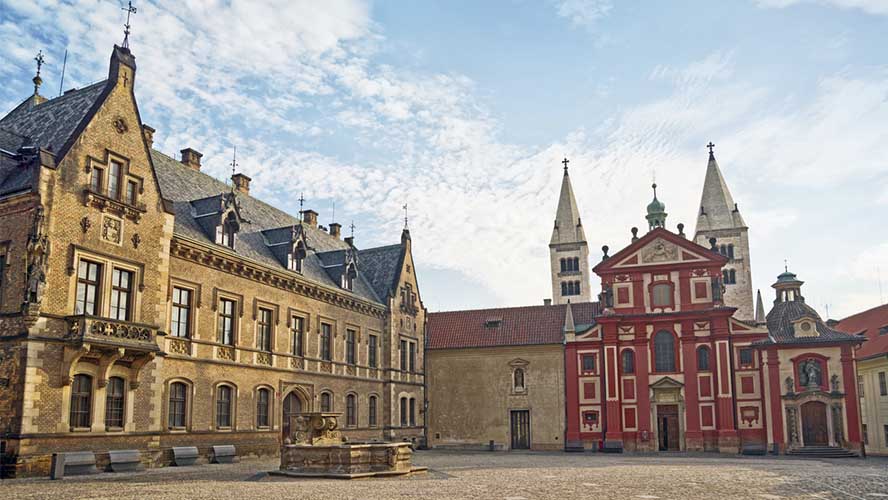
How to get the most from your visit to St George’s Basilica
Before you do anything else and while you are still outside, approach the basilica from Jiřská Street, as from this point you can get a view of one of its most interesting lateral porticos, dating from the sixteenth century. It is worth stopping to look at the tympanum embellished with a relief portraying St George slaying the dragon.
Having circled the building and arrived at the square, we come face to face with the church’s greatest contrast: its Baroque façade. Its main distinguishing feature is the typical red brick of its construction, a result of the remodelling undertaken towards the end of the seventeenth century. The Romanesque towers, on the other hand, are testament to the austerity of the original building in this unusual combination.
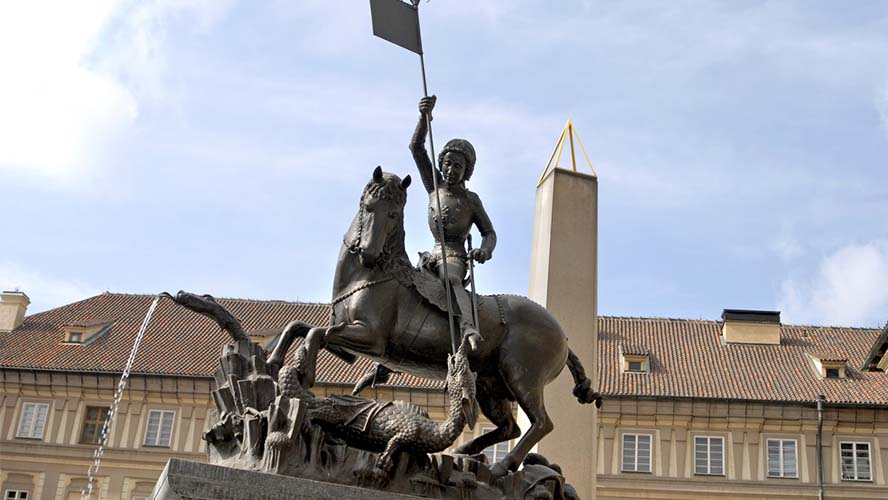
Still looking at the outside of the building, you will see another Baroque addition to one side of the main façade, St John Nepomuk’s Chapel. Its exterior has the same aesthetic of carmine bricks and an entrance flanked by Solomonic columns.
What to see inside the basilica
We can best appreciate the Romanesque past of St George’s Basilica once we are inside the building, and especially in the apse, which is adorned with rather later frescoes dating from the twelfth century. Take your time to walk along the naves, because this is a space filled with art works, with various paintings on religious subjects.

Don’t forget to visit the crypt which contains, among other tombs, the remains of the basilica’s founder, Vratislaus I, Duke of Bohemia. The Chapel of St Ludmila deserves a special mention, as its walls are embellished with Romanesque murals that are worth looking at.
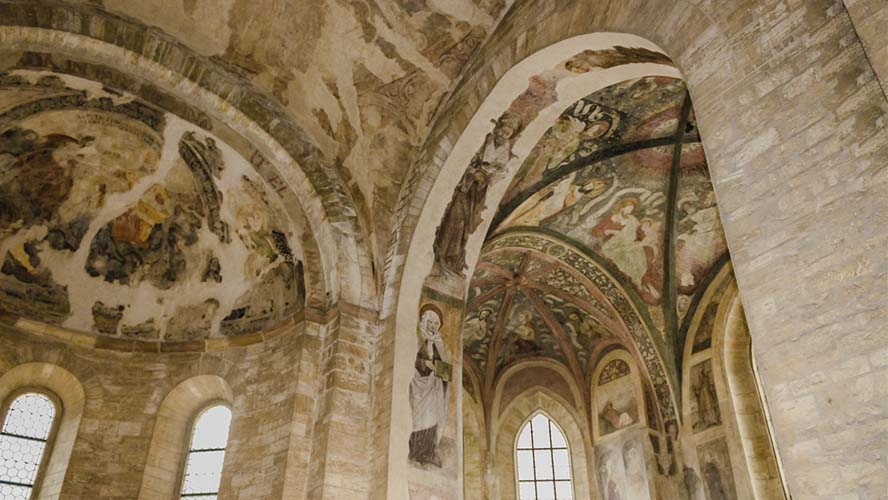
The ancient convent of St George
Continuing along the same artistic lines, we can recommend paying a visit to the building attached to the church, the ancient convent of St George. One of the earliest to be founded in the Czech Republic, this was home to an order of Benedictine nuns. Today, this building has been comprehensively adapted to house an exhibition of a wide-ranging collection of Bohemian art from the eighteenth and nineteenth centuries, owned by Prague’s National Gallery.
Among works by the most renowned artists of this period, the exhibition includes several magnificent landscape paintings by Julius Mařák, as well as portraits by Josef Manés. This is a good opportunity to get a close look at the works of some of the country’s most revered painters, tracing a path among their delicate brushwork and their palette of colours.
Prague Castle is a living part of the history of the city, and within this immense complex can be found monuments that are essential viewing for anyone interested in learning something of Czech architecture. Observing how St George’s Basilica has developed down the centuries, and seeing how it still retains its authenticity, is an undiluted pleasure.





































































